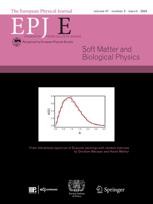Measuring how tumours respond to compressive stress
Experiment improves our understanding of how compressive stress is linked to changes in how cancer cells grow and move
New York | Heidelberg, 19 September 2025
 While a tumour’s development is strongly tied to genetic factors, these are also intertwined with physical and chemical changes in its cells. Many of these changes are linked to compressive stress, which builds up inside a growing tumour as it pushes against surrounding tissues. However, researchers still have much to learn about how these interconnected processes respond to varying levels of stress.
While a tumour’s development is strongly tied to genetic factors, these are also intertwined with physical and chemical changes in its cells. Many of these changes are linked to compressive stress, which builds up inside a growing tumour as it pushes against surrounding tissues. However, researchers still have much to learn about how these interconnected processes respond to varying levels of stress.
Through a new experiment detailed in EPJ E Morgan Delarue and colleagues at the University of Toulouse have gained deeper insights into the impact of compressive stress on the division and movement of tumour cells. Their results could help improve our understanding of tumour development – potentially opening new routes to effective cancer treatments.
When a tumour accumulates compressive stress, the resulting changes can occur both in epithelial cells – thin, protective cell layers that line the surfaces of many internal organs and blood vessels – and in the surrounding stromal compartment, which consists of connective tissue, fibroblasts, and other supporting cells.
To study this behaviour, Delarue’s team designed a simple experiment: they grew pancreatic cancer cells as a flat layer in a dish, then gently placed a soft block of gel on top to press them down. This created a controlled, even compression that mimicked the mechanical pressure experienced by cells inside a tumour. The team then observed how compressive stress affected cell division and migration in different pancreatic cancer cell lines.
In every case, they found that cell division and migration slowed proportionally with the amount of stress applied. Notably, cells with a more mesenchymal-like behaviour – typically more mobile – were more strongly affected than cells with a more epithelial-like behaviour, which are more focused on division. They also found that reduced cell division was accompanied by increased “macromolecular crowding”: tighter packing of proteins and biomolecules inside cells, which can affect a wide array of biochemical reactions. Together, these findings suggest that compressive stress changes the physical and chemical environment inside cells, with significant consequences for how they grow and move.
Reference: Ben Meriem, Z., Meksassi, M.B., Denais, C. et al. Proportional modulation of proliferation and motility under 2D compressive stress depends on mesenchymal phenotype. Eur. Phys. J. E 48, 52 (2025). https://doi.org/10.1140/epje/s10189-025-00516-0
Further Information
For more information visit: www.epj.org
Services for Journalists
The full-text article is available here.
Contact
Sabine Lehr | Springer | Physics Editorial Department
tel +49-6221-487-8336 | sabine.lehr@springer.com
